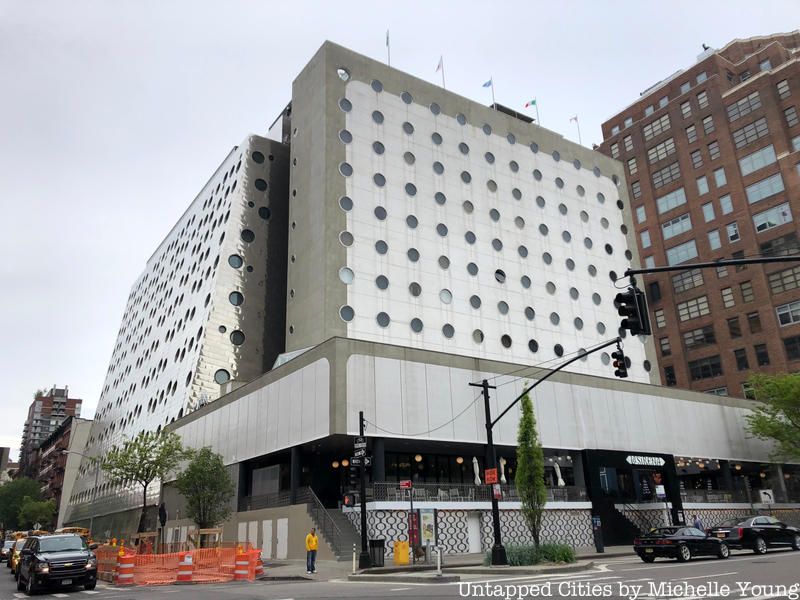Last-Minute NYC Holiday Gift Guide 🎁
We’ve created a holiday gift guide with presents for the intrepid New Yorker that should arrive just in time—


New York City would not be the empire city it is today without the water that surrounds it. Over four centuries ago, Henry Hudson, aboard the Half Moon, traveled the waterway that would become his namesake as well as the marvelous collection of lands and inlets that would become New York City. Hudson was not the first to discover this waterway, but his travels were momentous as he established the Dutch East India Company within the region — which was responsible for the development of what would become New York City.
Water has always been the lifeblood of New York City. Native Americans settled in what they deemed Mannahatta because of its close proximity to water which provided an ample food and drinking supply. Years later when the Dutch arrived, they instantly recognized the water as an invaluable asset for trade; for without it, their Dutch East India Company would have been a failure. In turn, trade brought exotic products, materials and peoples to the city — in many ways laying the foundation for the melting pot that New York City was to become. As sea travel was imperative for these ventures, the City became a haven for sailors and seamen, resulting in a great deal of shipbuilding and ship related industries occurring here.

Seamen’s Church Institute – 241 Water Street
As seafaring and sea travel were intrinsic to New York City’s economy and development, it is no surprise that these themes are represented and reinterpreted in architecture throughout the City. Certain buildings existed to serve the sailors and seamen who traveled to, from and through New York City upon their nautical adventures. One such building was the Seamen’s Church Institute, at 241 Water Street in the South Street Seaport, a fitting location for a building that would provide professional, educational and spiritual services to mariners. Built by Polshek Partnership in 1992, the building is a playful interpretation of a boat, complete with a mast, balconies, exterior staircases and nautical doors and windows. However, the organization, which originated in 1834, left this building and relocated to Trinity Place.
Another building with a primary function to serve the maritime industry is the former American Seamen’s Friend Society Sailor’s Home and Institute, built in 1908 by William A. Boring, the architect of another very nautical destination – Ellis Island. Featuring cabin-like rooms and architectural detailing reminiscent of a ship, the building served as a hotel for sailors and in 1912 housed the survivors of the Titanic. Despite the days of shore activity and sailing being a thing of the past, the Jane Hotel, the current tenant, has kept the cabin-like rooms and nautical elements.
The Jane is not the only hotel with a nautical past. Today’s luxurious Maritime Hotel is now a fixture of the trendy Meatpacking District, but was a former building of the National Maritime Union. Architect Albert C. Ledner was commissioned by the Union in the 1960s to design three buildings—Joseph Curran Plaza (currently the Maritime Hotel), the Headquarters Building at 7th Avenue between West 12th and 13th Streets (the former St. Vincent’s Medical Center) and the Joseph Curran Annex at 346 West 17th Street. All of these buildings, clad in white, feature portholes as windows. As a result of the decline of maritime industry in the City, these buildings were sold and resold — yet their facades will always indicate a nautical influence.

Yachting and cruising, preeminent pastimes of the rich and famous, are also represented architecturally. At the southern tip of Manhattan, at 25 Broadway, stands the Cunard Building, an elegant and regal limestone Beaux Arts structure from 1921, built by Benjamin Wistar Morris, with Carrere and Hastings as consulting architects. The former headquarters for the Cunard Line, this building contains marine touches such as starfish, seahorse, shells, sirens, an albatross, and the vessels of Columbus and others as well as nautical themed paintings, murals and medallions.
 The Cunard Building
The Cunard Building
Another building dedicated to yachting is Warren & Wetmore’s New York Yacht Club at 37 West 44th Street built in 1900. The home of the American Cup, this building that serves as a clubhouse for yachting enthusiasts is a “fanciful example of Beaux Arts design, neo-Baroque division, with windows that bear the sterns of old ships drooling pendant waves, and worked in among the columns” (AIA Guide to NYC Architecture). Gorgeous photographs of the interior have been taken by Walter Dufresne.
 New York City Yacht Club
New York City Yacht Club
Although New York City’s nautical industry may not be as prevalent as they were, the architecture associated with these industries and pastimes still exist, providing a tangible reminder of New York City’s maritime past. Part II of this piece will celebrate the fanciful and ornate architecture inspired by the ocean and its inhabitants.
Get in touch with the author @LiteraLee
Subscribe to our newsletter